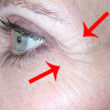At first look, everyone’s blood looks the same. It is when observed under a microscope that it becomes clear that there are slight differences in the blood’s components. You see, your blood is actually made of several different components:
• Erythrocytes – Red blood cells that transport oxygen molecules from the lungs to the various parts of the body.
• Leukocytes – White blood cells that assist the immune system in fighting off infections.
• Thrombocytes – Popularly known as platelets, they are involved with the blood clotting process.
• Plasma – The liquid part of the blood wherein every single component of it is suspended.
Experts say that up to 95% of your body’s blood cells are formed in the bone marrow, the spongy material found in the center of your bones. Aside from the components mentioned above, your blood also contains fat globules, gases (oxygen, carbon dioxide and nitrogen) and other chemicals (proteins, carbohydrates and hormones).
Blood types come in 4 major types. Which one you have is determined by the presence or absence of certain antigens (substances that can cause an immune response if the body detects that they’re foreign) in the blood, particularly on the surface of the red blood cells. It is vital for you to know your particular blood type because safe blood transfusions greatly depend on it. The goal is for you to donate or receive the right kind of blood based on its type in order to prevent an immune response wherein the body attacks the transfused blood.
There are a couple of kinds of antigens, namely A and B. As earlier mentioned, the blood type is determined by the antigen or antigens present. Aside from antigens, it’s also important to note that there are the so-called antibodies. Antibodies are substances that attach to antigens in order to trigger an immune response.
Here are the 4 major blood types, each one with a brief description:
• Blood type A – This is your blood type if your red blood cells have A antigens on them. Your plasma, on the other hand, contains B antibodies.
• Blood type B – If your red blood cells have B antigens on them, your blood type is B. A antibodies can be found in your plasma.
• Blood type AB – Your blood type is AB if your red blood cells have both A and B antigens on them. Your plasma contains no A or B antibody.
• Blood type O – This is your blood type if neither A or B antigens can be found on the surface of your red blood cells. On the other hand, your plasma contains A and B antibodies at the same time.
In order to undergo a trouble-free blood transfusion, proper cross-matching of blood type is very important. The following is a brief discussion that enables you to know which type of blood can be transfused safely to which recipient:
• Blood type A – Someone with this blood type may donate blood to persons whose blood types are A or AB.
• Blood type B – If you have blood type B, it’s possible for you to donate blood to anyone whose blood type is B or AB.
• Blood type AB – Having this blood type means you may donate blood to those with blood type AB as well.
• Blood type O – You are regarded as a universal donor if your blood type is O because you may donate blood to anyone.
Did you know that there is a 3rd antigen? It is called the Rh factor. You are Rh negative if your blood does not contain this specific type of antigen. On the other hand, you are Rh positive if your blood contains it. Here’s a quick look at the donor-recipient relationship with regards to the Rh factor:
• Rh negative blood – It may be given only to a person who is also Rh negative.
• Rh positive blood – You may safely receive either Rh positive or Rh negative blood if you are Rh positive.













